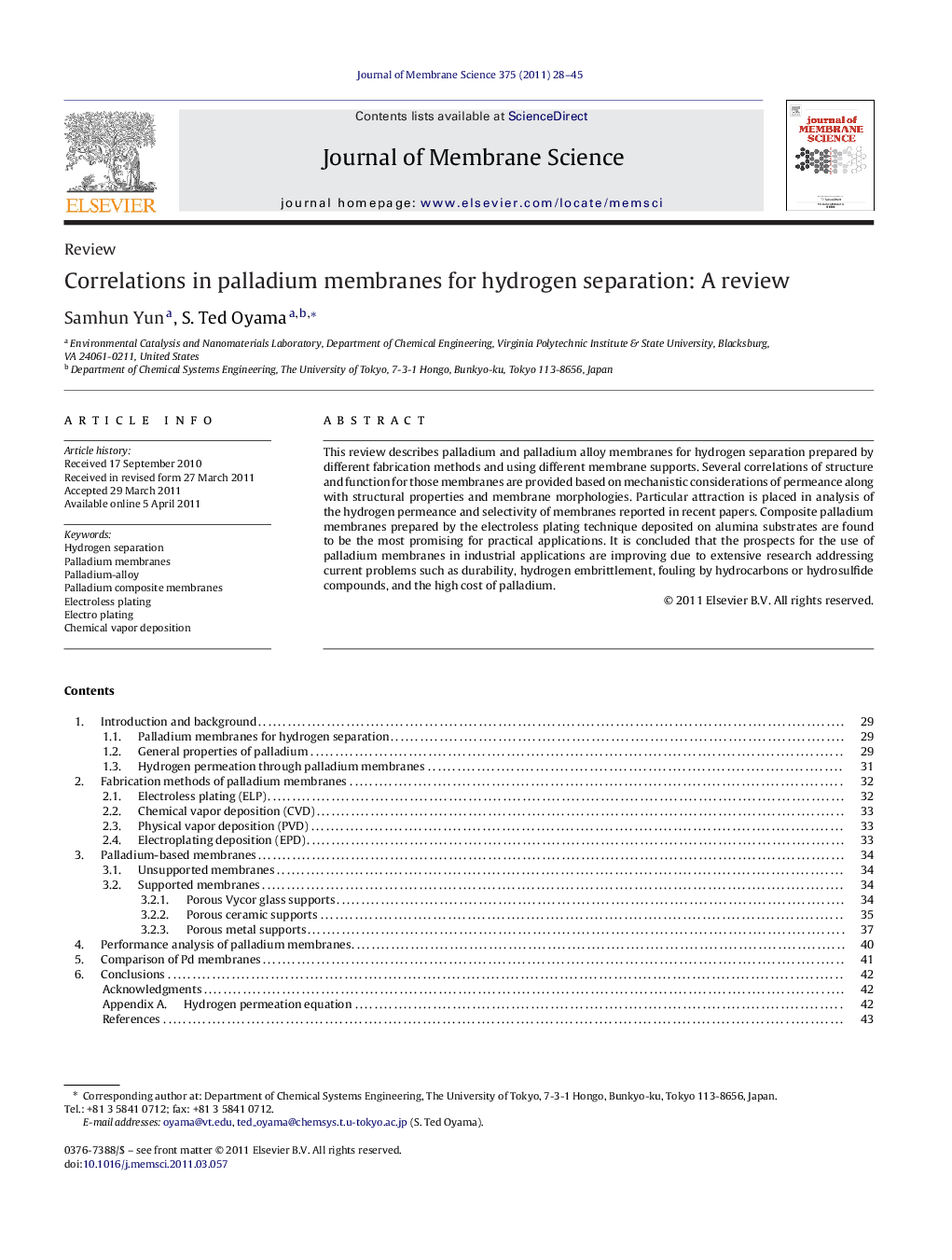| Article ID | Journal | Published Year | Pages | File Type |
|---|---|---|---|---|
| 635742 | Journal of Membrane Science | 2011 | 18 Pages |
This review describes palladium and palladium alloy membranes for hydrogen separation prepared by different fabrication methods and using different membrane supports. Several correlations of structure and function for those membranes are provided based on mechanistic considerations of permeance along with structural properties and membrane morphologies. Particular attraction is placed in analysis of the hydrogen permeance and selectivity of membranes reported in recent papers. Composite palladium membranes prepared by the electroless plating technique deposited on alumina substrates are found to be the most promising for practical applications. It is concluded that the prospects for the use of palladium membranes in industrial applications are improving due to extensive research addressing current problems such as durability, hydrogen embrittlement, fouling by hydrocarbons or hydrosulfide compounds, and the high cost of palladium.
Graphical abstractA review is presented of Pd and Pd-alloy membranes concentrating on the reporting of general correlations found in permeance behavior versus physical properties. The major methods of preparation are described and contrasted.Figure optionsDownload full-size imageDownload high-quality image (174 K)Download as PowerPoint slideHighlights► Pd-based membrane systems for H2 separation in bulk and thin film form are reviewed. ► Concentration is placed on correlations between properties and performance. ► Electroless plating (ELP), chemical vapor deposition (CVD) and electroplating (EPD).
